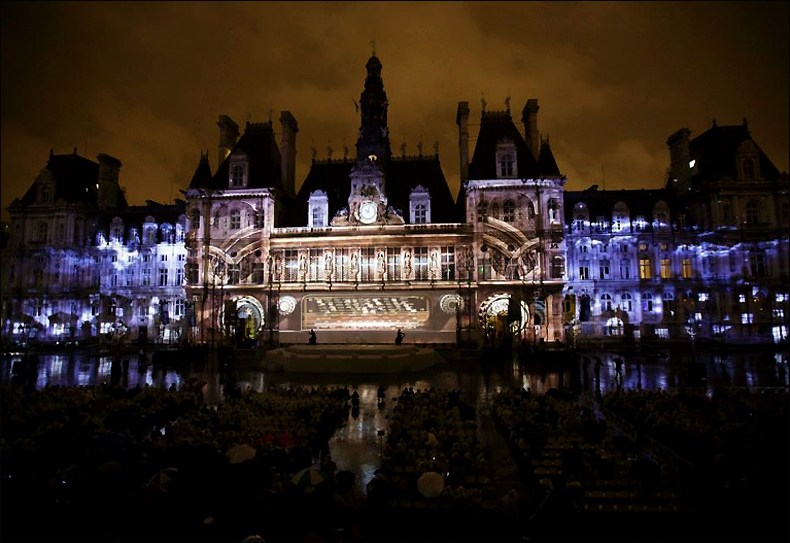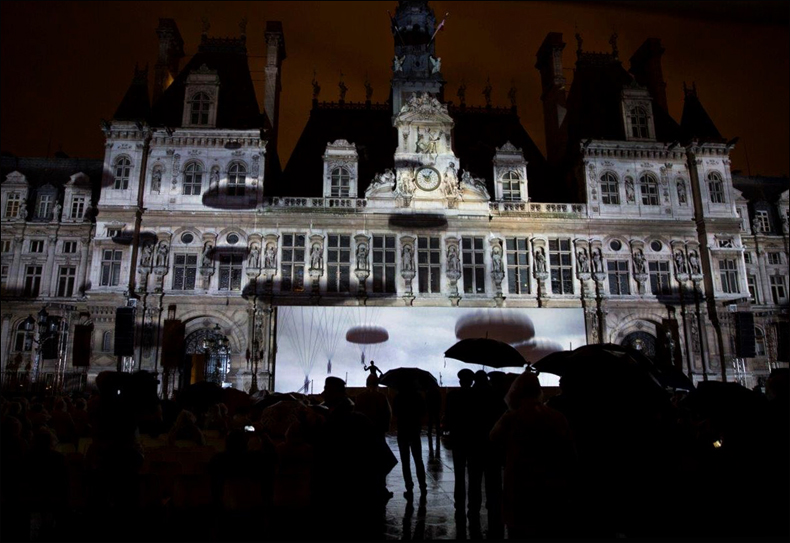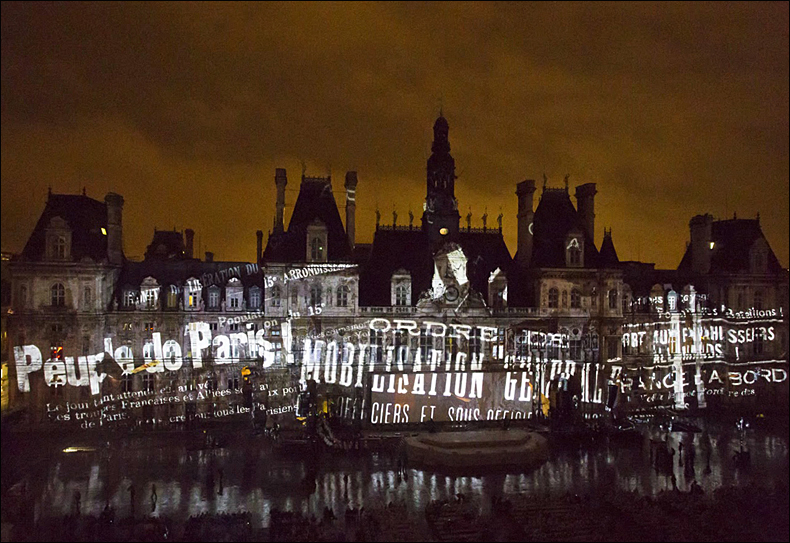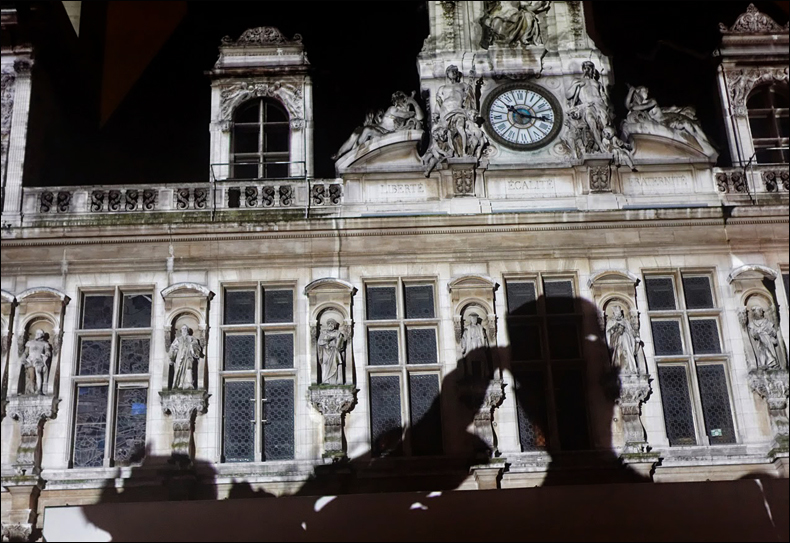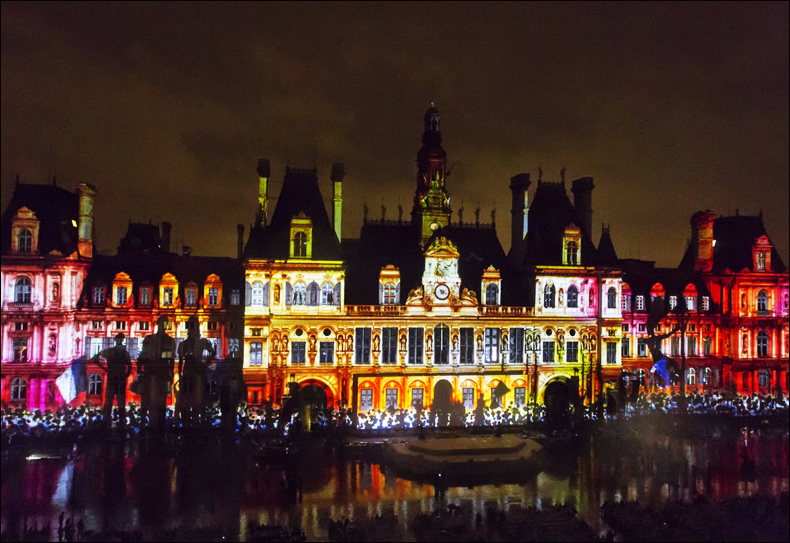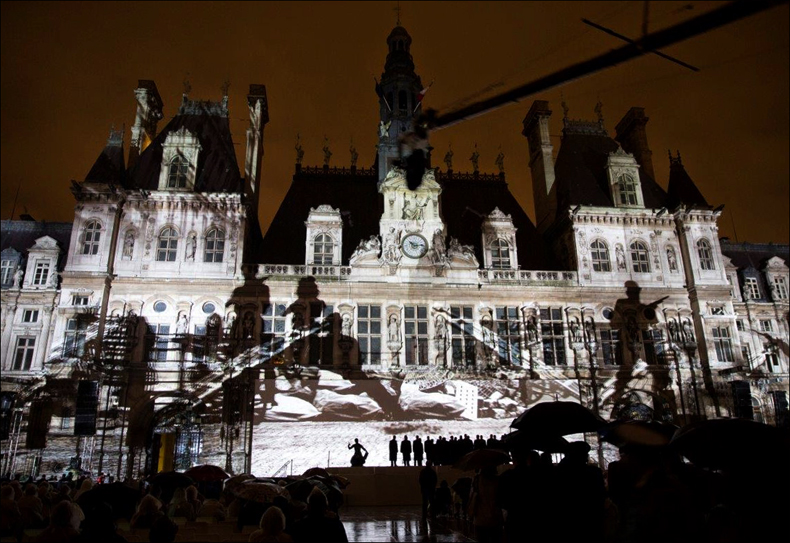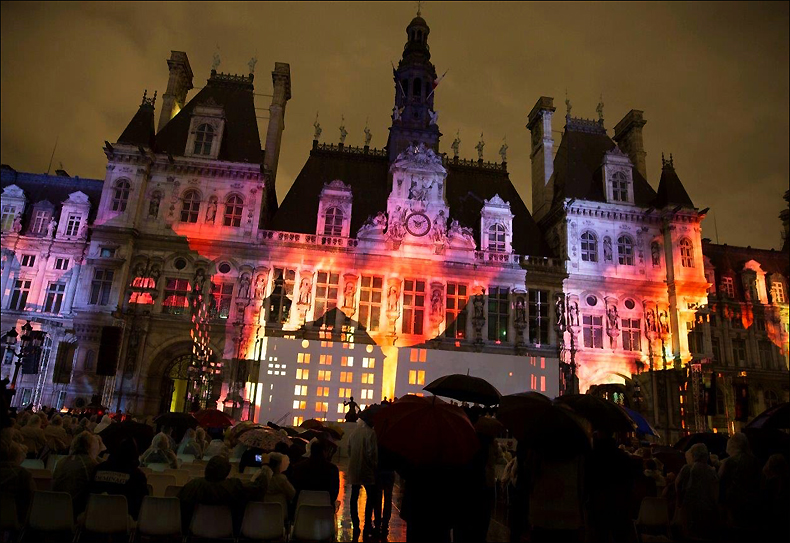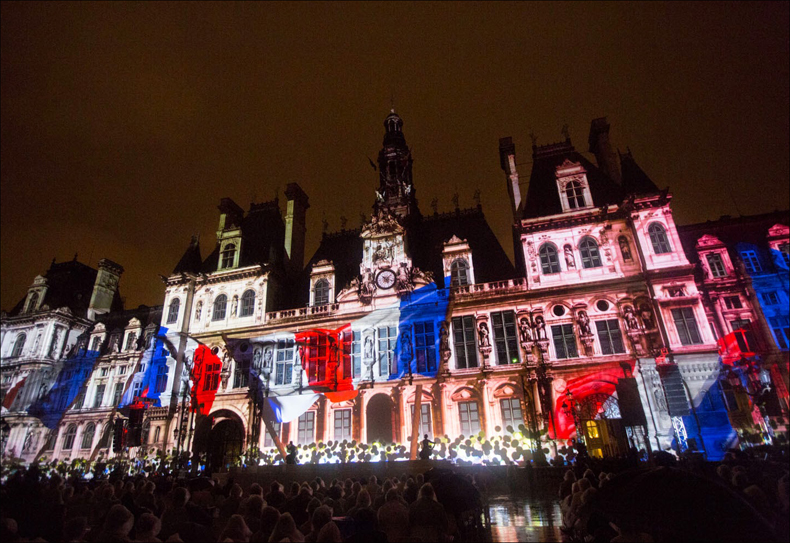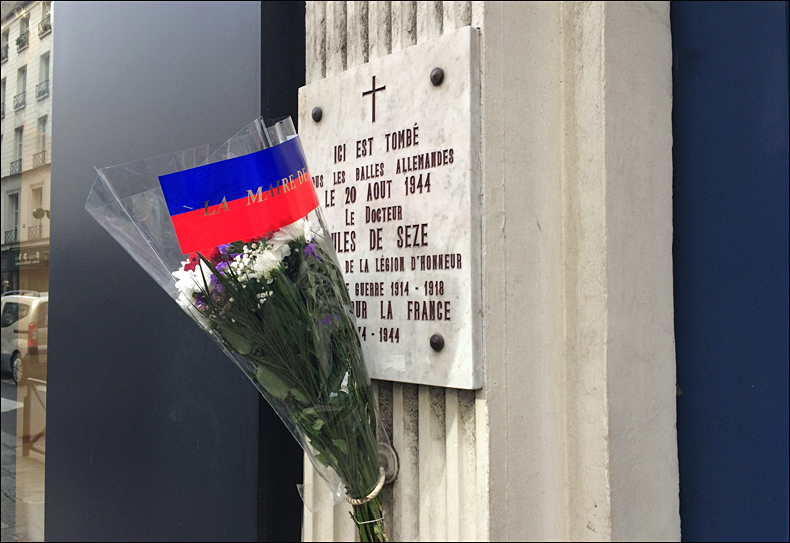It took 200 technicians four days to set up. Then they needed 32 projectors, 12 cameras, a 300-yard screen and 160 dancers, drummers and singers. Despite a rain that wouldn’t stop, Paris marked her Liberation with a digital coup.
The spectacle, which followed speeches and ceremonies, was created by the company Auditoire. In 2013, they marked the 100th Tour de France with inventive projections on the Arc de Triomphe. But, as their spokesman told the news, “That was making people go ‘wow’. This was something totally different”.
No kidding. In twenty fast-paced minutes, history flashed by: defeat by the Nazis, Occupation, the daily life of Paris during the War – then D-Day and the capital’s ten-day insurrection. It was that home-made uprising which began the city’s Liberation.
Broadcast live across the country, all this was video-mapped across the Hôtel de Ville (Paris City Hall). One of the first buildings taken by Resistants, it was where de Gaulle gave his “Paris liberated” speech.
As the shadows of real figures were echoed against it in huge “relief”, Auditoire played out a rousing vision of the past. The Liberation is famous for iconic images taken by Capa, Doisneau and numerous others – as well as much footage of girls kissing soldiers. A hundred years later, many of these were new images. Snapshots, film and audio had been found and donated by people all over France.
The week was already filled with stories, testimonies and memories. All of it helped reconstruct those crucial, bloody days – filled with fire and explosions, barricades and street snipers. Without diminishing anything, this brought it into our present.
Virtual it may have been yet it rendered history rousing and immediate.
• You can watch a version of the piece on Auditoire‘s site. (NB: To show how they made it, there are close-ups of some performers.)
• Many people did want the past kept in the past. No commentator compared the country’s current political turmoil with the (huge) political differences within the Resistance. That opportunity wasn’t lost on the few survivors who lived it, all of whom are now in their late eighties or nineties. Paris After the Liberation 1944-1949: Revised Edition gives a fascinating picture of the reality.

